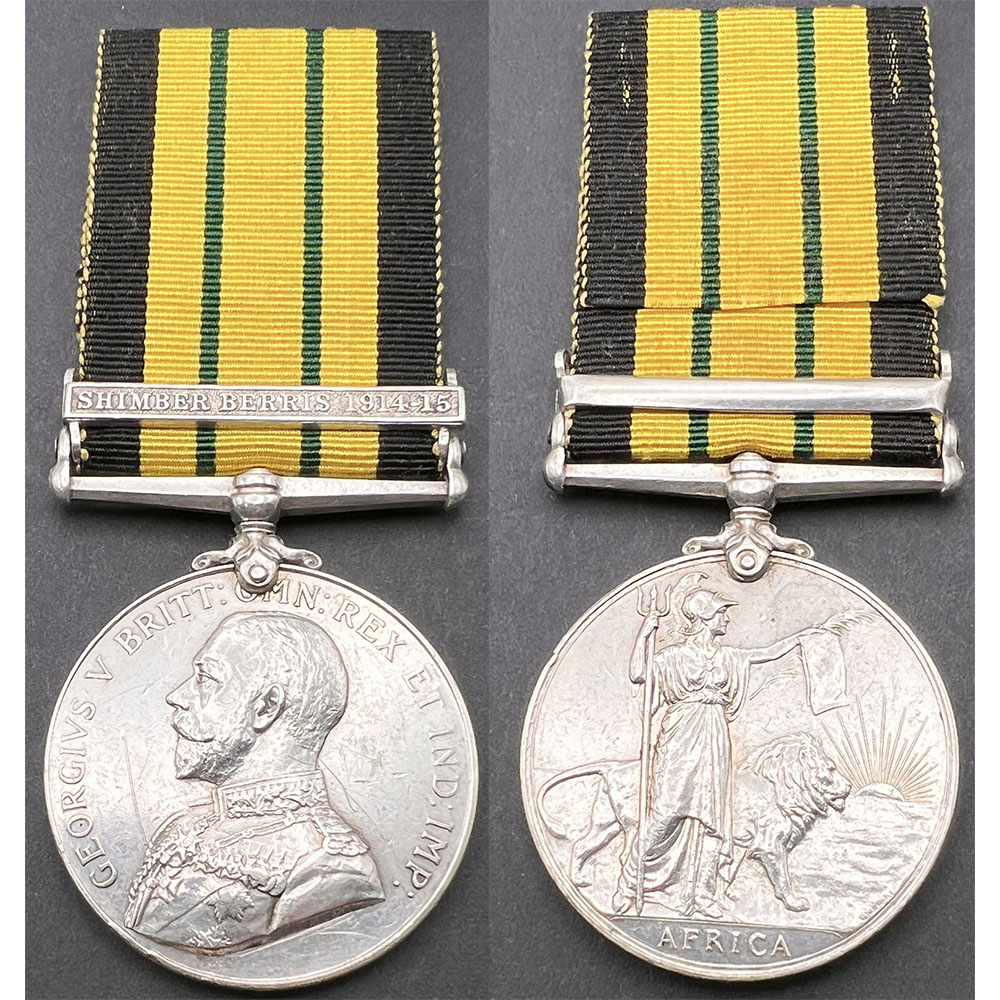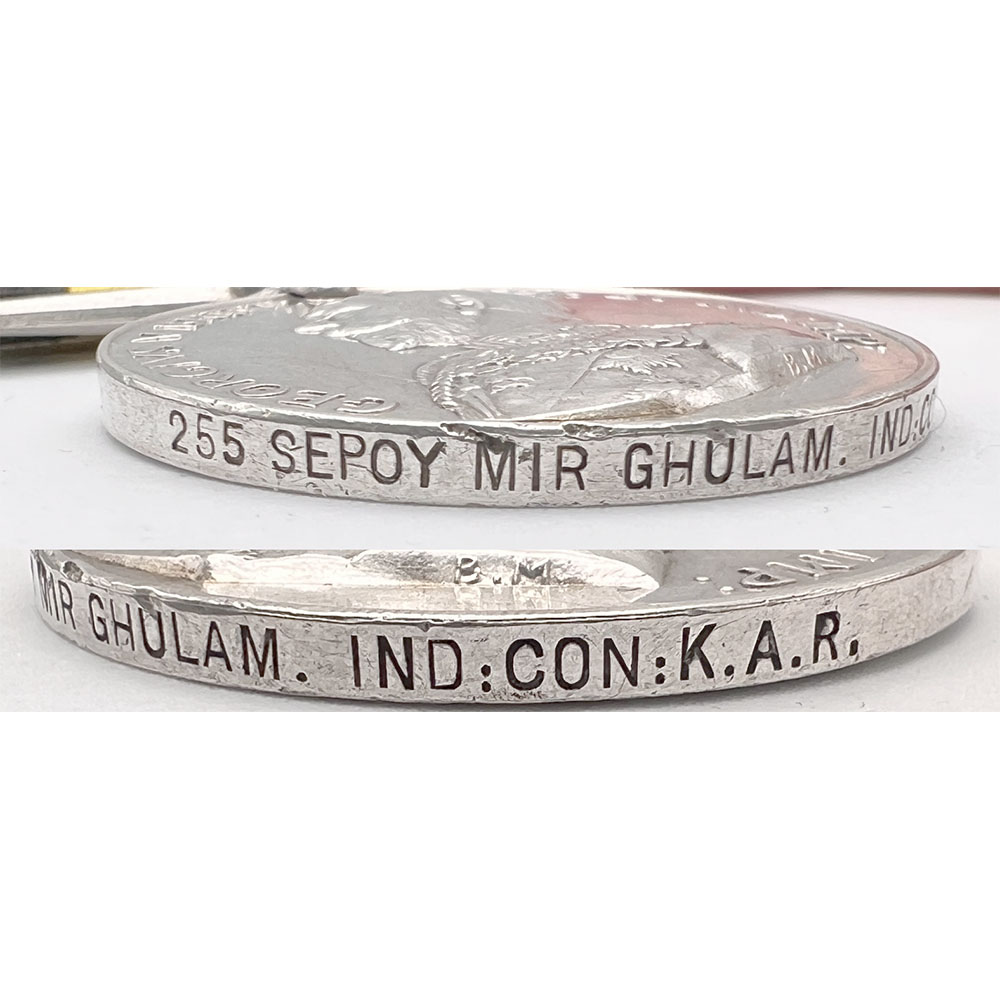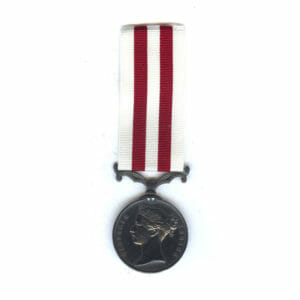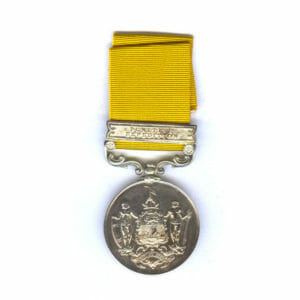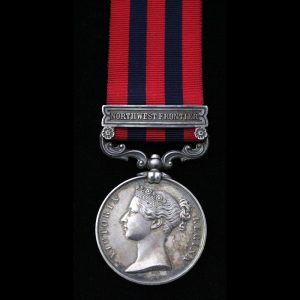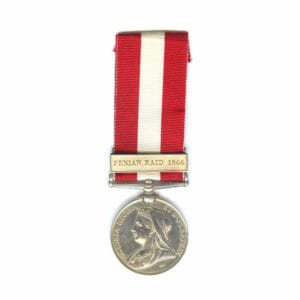Description
Africa General Service Medal, bar Shimber Berris 1914-15, 255 Sepoy Mir Ghulam, Indian Contingent, King’s African Rifles.
Officially impressed: “255 SEPOY MIR GHULAM. IND: CON: K.A.R.”
Confirmed on the medal roll, a rare clasp for a campaign fought in Somaliland on the hunt for the “Mad Mullah”.
Only 821 clasps issued in total for the campaign, with 306 to the Indian Contingent of the K.A.R.
A Summary from African General Service Medals by R.B. Magor of this battle honour:
“In July Lt. Col. T. Ashley Cubitt, D.S.O., (R.F.A.) O.C. Troops and Deputy Commissioner with Major G. H. Summers (26 Lt. Cav.) as Staff Officer. was appointed
During 1914, headquarters were set up at Burao. The troops available consisted of 150 rifles 73 Carnatic Infantry, 150 rifles of the Camel Corps and 150 Indian Mounted Infantry.
The Mullah, with the help of a German technician and Yemeni masons, had built a series of masonry blockhouses on the plateau of the Burdab range, each capable of holding fifty men. The forts had walls 12' thick at the base. Fields of fire had been cleared around the forts and the area was full of caves.
On 17th November 1914 Cubitt marched out of Burao with 14 officers and 520 Indian and Somali other ranks and arrived to within three miles of Shimber Berris before he was discovered. One of the forts was rushed and captured but the second fort was more firmly defended and could not be taken. Casualties were suffered including Captain A. Carton de Wiart (4 D.G.) who wounded twice (he later became a General and a V.C.). In his autobiography he describes how throughout the action the enemy kept up a running fire of insults and he was so near the Dervishes that he could touch their rifles with his cane.
The force then withdrew and returned on the 23rd November with an antiquated 7-pdr. gun. This had little or no effect on the walls, but it was too much for the nerves of the Dervishes, who fled. The forts could not be destroyed as there was no high explosive available and immediately afterwards they were reoccupied by the Dervishes. The cost of the initial attack was 1 officer and 5 men killed, and 2 officers and 25 men wounded.
In February Cubitt was back with 15 officers, 570 other ranks, 6 maxim guns 2 7-pdrs. and a detachment from the 23 Pioneers with a supply of high explosive.
The forts on the ridge were found to be unmanned and were destroyed by the Pioneers. The force then moved to attack the forts in the ravine which were taken and also destroyed, while those Dervishes who were sniping from the caves were bombed out. This time the casualties were less; 5 killed and 10 wounded.”
